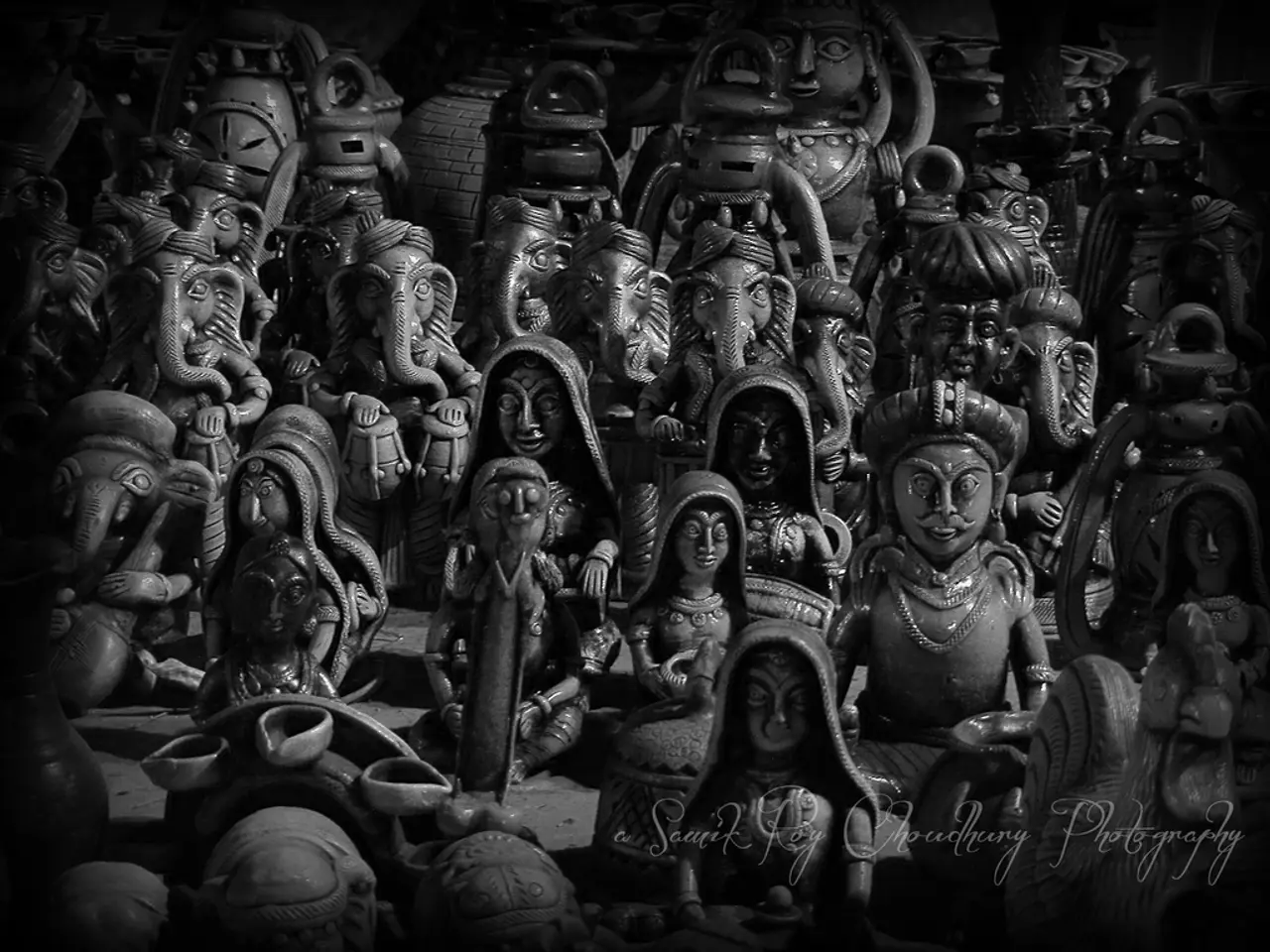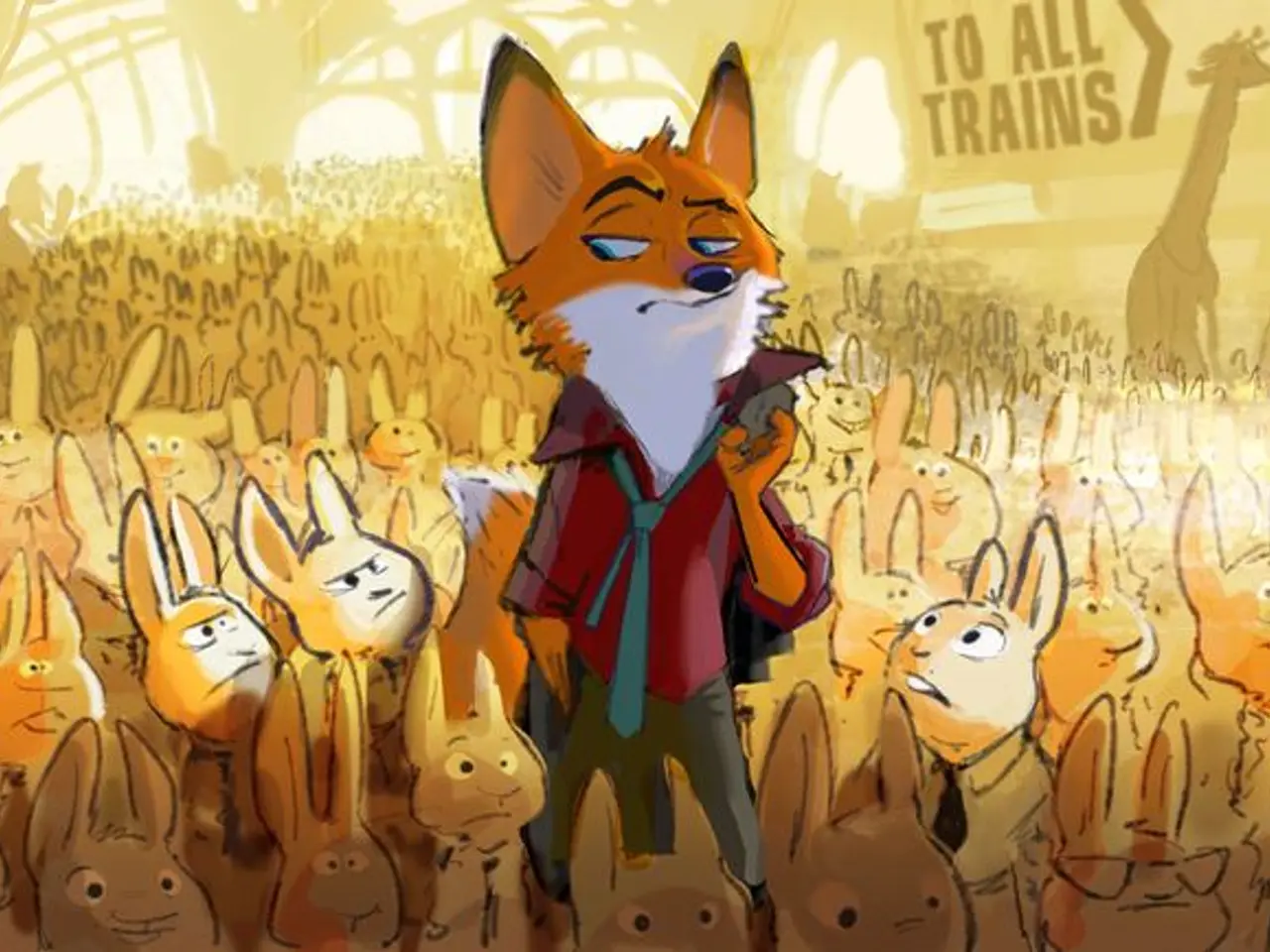Indian Film Industry, Pulsating Heart of National Cinematography
In the bustling world of Bollywood, the Indian film industry, a series of significant challenges have emerged in the modern era. These challenges range from shifting audience preferences and overdependence on big-budget films, to representation issues and star fatigue.
One of the most noticeable changes is the seismic shift in audience behaviour. The traditional mass audience for Hindi films is dwindling, with a growing sense of apathy towards mainstream Hindi cinema. This shift is reflected in the increasing popularity and box office success of non-Hindi films, including regional and Hollywood movies. In the first five months of 2025, non-Hindi content accounted for 63% of all-India box office collections, with Hindi films contributing only 37%.
The industry continues to rely heavily on star-driven, high-budget productions, often at the expense of mid-budget or content-driven films. This approach has led to disproportionate investments in a few projects, with many failing to recover costs, while smaller, fresher stories struggle for visibility in a crowded market.
July 2025 exemplifies another challenge: an overcrowded release calendar, with multiple big films and Hollywood blockbusters competing for screen space. This creates immense pressure on distributors and exhibitors to prioritise high-profile releases, often sidelining mid-budget films and increasing the risk for all participants.
There’s a growing consensus within the industry that reinvention is necessary. Producers and consultants emphasise the need to back fresh stories and new talent, rather than recycling formulas or banking solely on established stars. The call is for more successful mid-budget films that appeal to both the masses and the elite, but progress has been slow.
Bollywood also faces ongoing issues around representation—ensuring diverse voices and stories are told—and navigating censorship pressures, which can stifle creative expression and limit the range of narratives that reach audiences.
Even A-list stars like Salman Khan are acknowledging the physical challenges of maintaining their on-screen personas as they age, potentially signalling a need for new faces and genres that don’t rely solely on action spectacles or established male leads.
The industry is responding to these challenges in various ways. A significant adaptation has been the increasing acceptance and promotion of non-Hindi content within the Hindi belt, both by audiences and industry players, recognising the box office potential of diverse Indian cinema. There is a vocal segment of the industry advocating for more mid-budget films with fresh stories and new talent, as these are seen as essential for sustainable growth and audience re-engagement.
To cope with a crowded marketplace, some producers are experimenting with alternative release strategies, including staggered releases, digital premieres, and targeted regional rollouts. However, the dominance of big-ticket releases during peak seasons remains largely unchanged.
Discussions about improving representation and resisting censorship are ongoing, though concrete systemic changes are yet to materialise on a large scale. There are signs of genre diversification and efforts to introduce new faces, but the industry still leans heavily on established stars and traditional masala formulas, with only tentative steps toward broader innovation.
The future of Bollywood remains uncertain, with traditional models still dominating the landscape, but the industry is poised to adapt and evolve, safeguarding its position as a critical power in global entertainment. The unique storytelling style of Bollywood, which combines traditional Indian culture with modern storytelling methods, continues to enchant crowds with its special stories and energetic artistic encounters. Collaborations with global movie producers and studios further enhance Bollywood’s overall appeal, as it embraces trendsetting innovations like CGI and streaming stages, changing the way Bollywood films are made and consumed.
In the realm of Indian cinema, a shift has emerged towards a growing preference for non-Hindi films and diverse Indian content, which accounted for 63% of all-India box office collections in the first five months of 2025. The entertainment industry, including movies and TV, faces the challenge of diversifying content beyond star-driven, high-budget productions, as mounting pressure from audiences calls for more mid-budget films and fresh stories.






